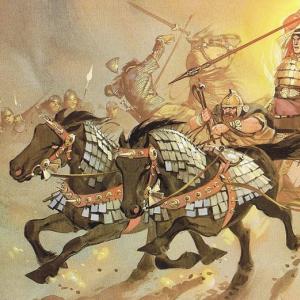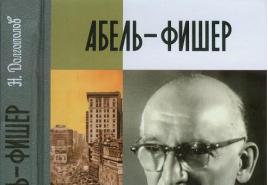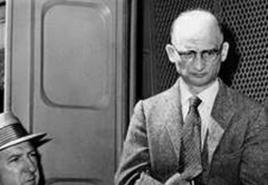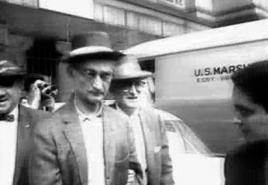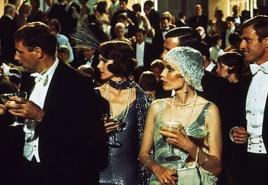Simonov's brain. Simonov, pavel vasilievich
Simonov P. V. The Emotional Brain. Physiology, Neuroanatomy, Psychology and Emotion. New York and London: Plenum Press, 1986.
Simonov P.V. Motivated brain. Moscow: Nauka, 1987.
Simonov P. V. The Motivated Brain. A Neurophysiological Analysis of Human Behavior. Philadelphia: Gordon and Breach Science Publishers. 1991.
Simonov P.V.Creative brain. Moscow: Nauka, 1993.
Simonov P.V. (ed.) Individual brain. Moscow: Nauka, 1993.
Simonov P.V. Ershov P.M. Temperament. Character. Personality. Moscow: Nauka, 1984.
Simonov P. V., Yershov P. M. Temperament, Character, Personality: Biobehavioral Concepts in Science, Art and Social Psychology. Philadelphia: Gordon and Breach Science Publishers, 1991.
Simonov P.V., Ershov P.M., Vyazemsky Yu.P. The origin of spirituality. Moscow: Nauka, 1989.
ADDITIONAL LITERATURE
1st lecture
Balaban P.M.The concept of reinforcement in research on
Simple nervous systems // Zhurn. higher. nervous active
T. 47. No. 2. P. 280. Luria A.R. Fundamentals of Neuropsychology. M .: Moscow State University. 1973. Pavlov IP Pavlov's wedge, Wednesday. M.-L .: Publishing house of the Academy of Sciences of the USSR.
T. 1. Ukhtomskiy AA Essay on the physiology of the nervous system // Sobr. op.
L .: Publishing house of the Academy of Sciences of the USSR. 1954. T. 4. Shepard G. Neurobiology. T.2. M .: Mir. 1987. Balaban P. M., Chase R. Selfstimulation in snails // Neurosci. Res.
Comm. 1989. V. 4. No. 3. P. 139. Balaban P. M., Maksimova 0. A. Positive and negative brain zones
In the snail // Europ. J. Neurosci. 1993. V. 5. No. 6. P. 768. Godefroid J. Les chemins de la psychologie. Liege-Bruxellss: Pierre
Mardaga. 1988.
James W. What is emotion // Mind. 1884. No. 4. P. 188.
Price D., Barrell J. Some general lows of human emotion: Interrelationships between intensites of desire, expectation and emotional feeling // J. of Personality. 1984. V. 52. No. 4. P. 390.
Rime B. Les theories des emotions // Cah. psychol. cognitive. 1984. V. 4. No. 1. P. 5.
Schmidt R., Thews G. (Eds.). Human Physiology. V. 1. Springer Verlag. 1983.
I am a lecture
Pavlov I.P. Twenty Years of Objective Study
Higher nervous activity (behavior) of animals.
M .: Science. 1973. Sherrington Ch. Integrative activity of the nervous system.
L .: Nauka, 1969. Milgram S. Obedience to authority. New York. 1974. Orlebeke J. Personality dimensions and arousal. Book review
// Psychophysiology. 1988. V. 25. No. 6. P. 718.
I am a lecture
Vygotsky L. S. Sobr. op. T. 2. 1982-1984.
Kaverin S. B. On the psychological classification of needs
// Question psychology. 1987. No. 5. P. 121. Levi V. I and We. M .: Young Guard. 1973. Lesgaft PF Sobr. teacher, op. T. 3.M .: Physical culture and sport
Nabokov V. Fyodor Dostoevsky // Lit. newspaper. 1990. № 36. S. 7. Russell B. Why I am not a Christian. M .: Politizdat. 1987. Tolstoy L. N. Complete collection. op. in 90 volumes. V. 46. Moscow-Leningrad: 1958. Fromm E. Escape from freedom. M .: Progress. 1990. Schrader Y. Wrong alternative // \u200b\u200bMan in the system
Science. M .: Science. 1989.S. 259.
4-i am a lecture
Vygotsky L. S. Sobr. op. T. 1. 1982.S. 137.
Pavlov I.P. Complete collection. works. T. 3. Book. 1. M.-L. 1951.
Polani M. Personal knowledge. M .: Progress. 1985.
Tolstoy L. N. Complete collection. op. Vol. 12, p. 323.
Freud 3. Psychology of the unconscious. M. 1989.S. 429.
Schopenhauer A. Freedom of will and morality. M .: Republic. 1992.S. 9.
I am a lecture
Ad Omar J. Research of the psychology of invention in the field of mathematics. M .: Sov. radio. 1970.
Volkenshtein M.V. Biophysics. M .: Science. 1981.
Dostoevsky F.M. op. T.l. M .: Goslitizdat. 1956.
Mandelstam N. Ya. Mozart and Salieri // 3rd January. 1993. No. 9.P. 120.
Medavar P. Literature against science. M .: Mir. 1979.
Pavlov I.P. Twenty Years of Experience ... M .: Nauka. 1973.
Timiryazev K.A. Works. T. 6.M .: Selkhozgiz. 1939.
Popper K., Eccles J. The Self and its Brain. New York: Springer. 1977.
Foreword ................................................. ................ 3
LECTURE ONE
What is emotion? The brain mechanisms of emotions .......... 5
LECTURE TWO
The neurobiology of personality. Temperament ......... 27
LECTURE THREE
The needs of man and higher animals.
Personality and character ............................................... ..41
LECTURE FOUR
Conscious and unconscious in the activity of the brain.
Consciousness and empathy .......................................... 65
LECTURE FIVE
The neurobiology of creativity: dominant and
functional asymmetry of the brain ............................ 77
Further reading ...................................... 91
CONTENTS
The First Lecture.
WHAT IS AN EMOTION? BRAIN MECHANISMS OF EMOTIONS.
Emotion as a function of an actual need and probability (possibility) of its satisfaction. Classification of emotions. Brain structures realizing the reinforcing, com-pensatory-substitutional and communicative emotional functions. Asymmetry of the brain mechanisms of positive and negative emotions as the result of peculiarities of informational (cognitive) functions of the left and right hemispheres. The availability of the negative and positive emotions as a result of the tendencies aimed at preservation and development of the living systems.
The Second Lecture.
NEUROBIOEOGY OE THE INDIVIDUALITY. TEMPERAMENT.
The individual specificity of the interaction of the frontal parts of the neocortex, hippocampus, amygdala and hypothalamus as the basis of ancient temperaments, Pavlov "s types and Eysenck" s parameters. Testing of the individual behavioral peculiarities: the choice between the probability and reinforcement value, delay in the motor reaction for the sake of more significant reinforcement, comparative efficiency of the artificial and zoosocial aversive stimuli. Typological peculiarities of the functional brain asymmetry.
Refers toThe theory of emotions P.V. Simonov
From the informational "theory" (in fact, hypotheses) of P. V. Simonov:
"But all of these and similar factors determine only variations of the infinite variety of emotions, while two, only two, always and only two factors are necessary and sufficient: the need and the likelihood (possibility) of its satisfaction."
"we came to the conclusion in 1964 that emotion is a reflection by the brain of humans and animals of any actual need (its quality and magnitude) and the likelihood (possibility) of its satisfaction, which the brain evaluates on the basis of genetic and previously acquired individual experience . "
"In the general view the rule for the occurrence of emotions can be represented as a structural formula:
E \u003d f [P, (In - Is),…. ],
where E - emotion, its degree, quality and sign; P - the strength and quality of the actual need; (In - Is) - an assessment of the likelihood (possibility) of satisfying a need based on innate and ontogenetic experience; In - information about the means that are predictively necessary to meet the need; IS-information about the means at the disposal of the subject at the moment.
"
"Positive emotion while eating arises from the integration of hunger arousal (need) with afferentation from the oral cavity, indicating a growing likelihood of satisfying this need."
In other words, it turns out: the intensity of the emotion is the greater, the greater the strength of the need and the greater the likelihood of its satisfaction.
Let's take the simplest situation. Predator attacks on a rather defenseless individual. It is clear that you need to react with lightning speed, otherwise you will not survive, you will not give offspring and the delayed type of reaction will not be transmitted to subsequent generations. You can, of course, talk about the emerging need to preserve life, but in this case, the probability of its satisfaction can be depressingly small, which already contradicts Simonov's formula, in whose example the case of satisfying hunger is given, when the strength of the need is high and the probability of its satisfaction in the course of absorption of food is just as great.
There is also a specific work that gives the opposite formula: "Between the strength of emotion, determined by the heart rate, and the magnitude of the need, subjectively felt by a person, there is a direct correlation dependence, and between the intensity emotional stress and the probability of satisfying the need is established negative correlation connection. ". (which is also controversial in view of the absence of such a definite relationship at all, which will be shown below).
In the above situation, in the case of an uncomfortable forecast, the emotion of passive numbness comes to the fore - as the only possible defensive reaction, and in the case of an optimistic forecast - the reaction of violent resistance.
According to Simonov, in the first case, the Yin argument (information about the means necessary to satisfy the need) is large, and the Is argument (information about the means that the subject has at the moment) is much less, it turns out that the emotion should turn out to be all the more positive, the less available opportunities for an individual :) Someone also gets a kick from a state of numbness?
In the example, the physiological purpose of emotions is just as obvious as a quick switch of the type of response, without which survival is impossible, and not just "emotion is a reflection of any actual need by the brain of humans and animals." In terms of the life experience of an individual, the task of quickly finding the desired type of reaction (choosing a suitable emotion) is played by the detection of the novelty of the situation. If the novelty is maximum, i.e. there is not a fig experience (which means that there is no need to talk about the components of the In and Is formula), then the choice will be predominantly passive behavior or one of the blanks of intimidating behavior, but not an "informational assessment of the likelihood of satisfying a need."
Even 20 years ago, I proposed another formula: the strength of emotion is the greater, the greater the product of the novelty of the perceived on its significance for a given individual. It is easy to see that this formula is more general and more adequate for describing the mechanisms of the formation of a response than Simonov's formula. Moreover, it directly reflects the fundamental principle of switching attention and the formation of long-term connections and directly follows from the modulating influence of new detectors on the response of the system of significance. Simonov's formula does not take into account the influence of new detectors at all, as if not noticing a completely inherent, well-studied mechanism of perception.
In work we read:
"P. V. Simonov believes that" the need acts as the driving force of any action, including the actions of everyday, automated, carried out against an emotionally neutral background. Thus, we have no reason to consider emotion as a direct and obligatory consequence of the emergence of a need In his works, PV Simonov sets himself the task of “focusing attention on those facts that show that need, attraction (motivation), excitation of the nervous apparatus of emotions and, finally, action represent closely related but independent links of adaptive behavior having a relatively independent anatomical representation in the brain. ”Thus, he believes that various anatomical structures of the nervous system are responsible for the development of motivations and emotions.
“According to the theory of P.V. Simonov, in the human body there are objectively certain needs that do not depend on consciousness. Motivation is the result of awareness of this need, which leads to the formation of the goal of activity. In this case, activity can be of two kinds: when the desired event approaches and to eliminate the unwanted. Emo
"It is interesting that on this issue there is a fundamental discrepancy between the positions of the theorists under consideration and the views of the physiologists of the Pavlovian school, who most often interpret higher emotions as a result of the complication of simple biological emotions."
However, this intuitive idea of \u200b\u200bPavlovtsy is quite justified and difficult to dispute. After all, it is quite easy to trace the existence of two most common emotions: the states of Good and Bad, which may not be clearly related to one of the traditionally distinguished emotions. These are not just subjective states, but quite specifically the localized centers of the brain responsible for these states.
"Unlike the Pavlovian school, which is characterized by the consideration of the human psyche as a stream of reflexes ordered by external events, within the framework of the direction based on the ideas of P.K. Anokhin, consciousness is considered rather as a set of motivations. So, P.V. Simonov believes, that "a person's personality is determined primarily by the totality and hierarchy of his needs (motives)."
But the needs are constantly changing over the course of a person's development and life, and even during one day they can be opposite, and a person, well, cannot be just a set of motivations.
"It was possible to induce various degrees of aggressiveness and fear by modulating the strength of the stimulus or the area of \u200b\u200bapplication of the stimulus. In experiments, in the absence of a real threat, reactions of mild anxiety, severe anxiety, panic fear or aggressiveness were evoked. external threats did not induce defensive behavior. Thus, by acting on the emotional-motivational structures of a higher mammal, it was possible to achieve artificial control of its mood and behavior. "
Thus, there are structures, the excitation of which, like the centers of Good and Bad, cause the appearance of more complex emotional states that CONTROL the TYPE of behavior of an individual, which is the main physiological purpose of emotions.
An interesting and informative article from the journal Bulletin of Biological Psychiatry No. 5, 2004
"PV Simonov also emphasized the informational nature of emotions. In the definition of Kabanak, the informational side of emotions
completely ignored. It is important to note that emotion is a mental mechanism that performs certain functions. In the process of functioning of this mechanism, various mental states arise, which are also called emotions. We can say that emotion is a mental state that arises as a result of cognitive processing of information that can be obtained from the outside, extracted from memory, or even invented, fantasized. Emotion regulates the amount of energy and released by the body to solve the problem associated with the information received.
The amount of energy and (activity) is determined by the level of physiological arousal. Emotion also determines, in very general terms, the sequence of actions (behavioral program) that is caused by the information received. For example, fear makes you run away or hide, anger makes you attack, interest makes you explore, hope makes you wait, etc. "
Here are some more arguments for the idea that emotions are the context of a certain style of behavior, and not just "informational assessment of the likelihood of meeting the need."
"According to the definition of M. Kabanak, pain will be a negative emotion. In it is proved that pain is a sensation (the result of the action of receptors). The emotional background of pain is suffering. An emotion that pain can cause is, for example, fear (with normal, so to speak However, there are people (masochists) in whom pain causes pleasant sensations and even pleasure. This means that pain does not have an unambiguous hedonic tone. There are emotions that also do not have an unambiguous hedonic tone, but they appear as a result of the perception of some Pain is a simple reaction of receptors to certain influences and is not directly related to the perception and processing of information.
Any emotion can arise not only as a result of the perception of external information, but also as a reaction to memories or one's own fantasies, which can be presented as a certain source of information. "
According to Simonov, it is difficult to explain masochism. The formula again slips a lot here.
According to Simonov “surprise will be an emotion only when it is pleasant or unpleasant. But surprise can be neutral. Does it cease to be an emotion from this? And what does it become? In Russian psychology, the concept of intellectual emotions is widely used.
They have no specific sign and can be positive, negative, or indifferent. Surprise as a reaction to unexpected information is an intellectual emotion in any hedonic tone. " The following is a description of the specifics of intellectual emotions.
Indeed, the requirements of a certain sign for emotions are Simonov's miscalculation, arising from the fact that he does not take into account the detection of the new (the basis of the orienting reflex and the state of surprise). And the intellectual emotions described in the article are an even more complicated phenomenon from the hierarchy of emotions, confirming that emotions are the context of behavior, and not "an informational assessment of the likelihood of satisfying a need."
"The work of Chevalier and Belzung describes the phenomenon of variability of emotions in the same situation. The same person in the same situation may have different emotions."
At the same level of need, or in general with a state of satisfaction and indifference, a person can experience a variety of emotions, regardless of forecasts and possibilities. In general, a person can switch their emotional states, which speaks specifically about the switchable function of emotional states, and not informational prognostic.
I also propose to read fair comments in
"P. V. Simonov put forward an" information "theory of emotions. He assumes that emotions make up for the lack of information.
They allow a person to act correctly even in conditions of an acute information deficit. But what does it mean to make up? I can only make up for the lack of food with something edible. The lack of knowledge can only be compensated for by knowledge - albeit of a "special kind".
"
etc.
IN "... according to the theory of functional systems of P. K. Anokhin, decision making is a choice of alternatives and is realized on the basis of feedbacks; this theory develops the" quantum "model of mental activity of K. V. Sudakov; and P. V Simonov proposed a discrete mechanism for explaining creative thinking based on the recombination of memorable traces (engrams), etc. "
"The opposite position was taken by our outstanding psychologist Andrei Brushlinsky, director of the Institute of Psychology of the Russian Academy of Sciences, who was brutally murdered in the entrance of his own house at the end of January 2002. He viewed the psyche not as a process of information processing, but as a continuous, non-disjunctive human interaction with the objective world."
"... it is the independent, arbitrary formation of initially absent criteria that fundamentally distinguishes human thinking from discrete processes in a computer."
IN
"According to the formula proposed by P.V. Simonov (his concept can also be classified as cognitive and has a special name - informational), the strength and quality of a person's emotion are ultimately determined by the strength of the need and the assessment of the ability to satisfy it in the current situation.
In later studies, it was found that of all the structures of the brain, the most functionally connected with emotions is not the thalamus itself, but the hypothalamus and central parts of the limbic system. In experiments carried out on animals, it was found that electrical effects on these structures can be used to control emotional states, such as anger, fear (J. Delgado).
The psychoorganic theory of emotions (this is how one can conditionally call the concepts of James-Lange and Kennon-Bard) was further developed under the influence of electrophysiological studies of the brain. On its basis, the Lindsay-Hebb activation theory arose. According to this theory, emotional states are determined by the influence of the reticular formation of the lower part of the brain stem. Emotions arise as a result of disturbance and restoration of balance in the corresponding structures of the central nervous system. "
It uses some of Simonov's ideas to create a more general picture. At the same time, the physiological purpose of emotions is considered very correctly.
"According to this theory (Simonov), if there is an excess of information about the possibility of satisfying a need, then a positive emotion arises, if there is a lack of information, then a negative emotion. It is believed that the variety of emotions is determined by the variety of needs.
However, without even going into detailed analysis, it is obvious that when satisfying any need, from the most primitive to the most complex need, one can experience joy, and if any need is not satisfied, one can experience grief. At the same time, one need, for example, food, can cause fear, if there is a high probability of its dissatisfaction (i.e. the possibility of hunger), it can cause hope for its satisfaction, it can cause gratitude for its satisfaction, etc. Those. one need can evoke different emotions and one emotion can evoke different needs. "
"Emotions perform many different functions in a person's mental activity. We will now describe only one that plays an important role for the purposes of classification. This function can be called simplifying in the process of making a decision about the future behavior of a person in each specific situation. In real life situations, many factors act meaning for a person.If you start weighing all the factors logically, it will take a lot of time, while delay in some cases can be fatal. Emotion, however, arises, makes a person act without reasoning. In critical situations it can save lives, in situations ordinary emotions are often harmful precisely because they interfere with weighing all the circumstances and making the best decision. "
IN
“Unfortunately, much of what is traditionally called the promising word“ theory ”in the theory of emotions is in essence rather separate fragments, only in aggregate approaching such an ideally exhaustive theory. The ability not to see many problems at once is sometimes a condition of advancement in one of them, therefore individual works can be interesting, insightful, subtle, can acquaint us with very important features of emotional life, but at the same time leave unresolved and even unidentified many equally interesting and important questions. "
Simonov P.V. Emotional brain. M., 1981, p. 4, 8, 13-14, 19-23, 27-39 178
Our approach to the problem of emotions belongs entirely to Pavlov's direction in the study of the higher nervous (mental) activity of the brain. (...)
Information theory emotions ... is not only "physiological", nor only "psychological", much less "cybernetic". It is inextricably linked with Pavlov's systemic approach to the study of higher nervous (mental) activity. This means that the theory, if it is correct, should be equally productive both for the analysis of phenomena attributed to the psychology of emotions, and for the study of the brain mechanisms of the emotional reactions of humans and animals. (...)
In Pavlov's writings, we find indications of two factors that are inextricably linked with the involvement of the brain mechanisms of emotion. First, these are the needs and drives inherent in the body, identified by Pavlov with innate (unconditioned) reflexes. “Who would separate,” Pavlov wrote, “in unconditioned complex reflexes (instincts), the physiological somatic from the mental, that is, from the experiences of the powerful emotions of hunger, sexual desire, anger, etc.?” (Pavlov, 1951, p. 335). However, Pavlov understood that the endless variety of the world of human emotions cannot be reduced to a set of innate (even the "most difficult", even vital) unconditioned reflexes... Moreover, it was Pavlov who discovered the key mechanism due to which the brain apparatus responsible for the formation and implementation of emotions is involved in the process of conditioned reflex activity (behavior) of higher animals and humans. (...)
On the basis of ... experiments, Pavlov came to the conclusion that under the influence of an external stereotype of repeated influences in the cortex large hemispheres a stable system of internal nervous processes is formed, and "the formation, setting of a dynamic stereotype is nervous labor of extremely different intensity, depending, of course, according to the complexity of the system of stimuli, on the one hand, and according to the individuality and state of the animal, on the other" (Pavlov, 1973, p. . 429). (...)
Pavel Vasilievich Simonov (nee Stankevich, April 20, Leningrad - June 6, Moscow) - Soviet, Russian psychophysiologist, biophysicist and psychologist. Academician of the Russian Academy of Sciences (1991; Academician of the Academy of Sciences of the USSR since 1987), Doctor of Medical Sciences (1961), Professor (1969). Laureate of the USSR State Prize (1987, in a team) for the creation and development of methods for diagnosing and predicting the state of the human brain.
Encyclopedic YouTube
1 / 3
✪ Brain and movement - Vyacheslav Dubynin
✪ Brain and curiosity - Vyacheslav Dubynin
✪ The structure and work of the brain
Subtitles
Speaking about biological needs, Pavel Vasilievich Simonov highlighted the needs of self-development, needs directed to the future. Simonov included programs of curiosity, imitation and programs related to movements, play and freedom among them. Movement is key. Most of the neurons in the human brain are involved in controlling movements, in memorizing motor programs, the structure of the motor cortex, cerebellum, and basal ganglia. In many cases, in order for movements to be truly effective, they need to be repeated and undergo motor training. And this requires positive reinforcement, positive emotions. In this case, a neurotransmitter called dopamine works, its main source is the neurons of the compact part of the substantia nigra. Their axons go to the basal ganglia and there provide the basis for motor skills. In addition, learning takes place at the level of the cerebellar structures. Most different types movements - reflex, locomotor, voluntary - that we generate by the cerebral cortex are prescribed in the cerebellum of the basal ganglia after repeated repetitions. All this happens against the background of the release of dopamine, against the background of positive emotions, so repeating the movements is pleasant. This function is especially effectively implemented in a small brain, in a newborn, in a child who is growing and must form these motor skills. For example, you look at a boy Petya Ivanov, three years old, and you see that he climbed onto a stool, jumped off the stool, climbed onto the stool, jumped off it, and so on 50 times. This is how the boy trains. He himself does not realize this, but his brain knows about it, his neural networks know, they regularly pay with dopamine to learn motor skills. The adult brain can do all this, so this block in adults often weakens, we no longer move so willingly. The proposal of a small child: “Mom, dad, let's jump, let's play” in an adult brain often causes deep bewilderment: “Why? I already know how to do all this ”. We are all different. If you have an actively installed substantia nigra, you can be very light on the move in life and you will experience positive emotions. Such people willingly walk, willingly go in for sports, dance, although this seems to be a completely meaningless activity. There are several motives for dancing in a disco, and dancing in front of a mirror is pure dopamine and the work of the neural circuits of the substantia nigra, cerebellum, and basal ganglia. The biological implications of motor learning are clear: you need to move well to meet a wide variety of needs. The kid runs, and he likes it, and then it will be useful for him to run away from the wolf. The kitten runs after a piece of paper, and he likes it, and then he will catch up with the mouse. The kid and the kitten do not know about this, but they know their global programs aimed at the future, pushing them to hone these motor skills. Dopamine-like molecules are able to activate movement and induce positive emotions associated with movement. These molecules are drug-like drugs like amphetamine, cocaine. They are well known and have a rather serious traumatic effect on the brain. Movements are embedded in a wide variety of behavioral programs. The body does not just move, but often, as it were, calls out biological programs that will be used in the future in order to escape from danger, to get food. A separate very important category of such programs is programs related to communication in society, pack, team. We see kittens or puppies fighting each other, pretending to be fighting, playing, but in fact this is a very serious component of behavior. First, it tests neural networks that are responsible for movement. Secondly, the small brain learns to assess the strength of the enemy: how powerful it is, who will win. In the future, in real collisions, all this information can be used and not get involved in completely hopeless enterprises. Animal play itself is very important, reinforced by dopamine. This also occupies a very large place in human behavior. It is not for nothing that the Dutch philosopher Johan Huizinga wrote the book "The Playing Man", where he put play at the forefront and wrote that play seems to be the most important thing in human culture. It lies at the basis of cult phenomena, at the basis of art, at the basis of science, that is, such actions occupy a huge place in our behavior. Huizinga even described the main features of the game. For example, the game is pretend, in free time, in a certain place, but still evokes positive emotions. And there are a lot of such manifestations of play behavior in our life. An example is a sport where two teams play the ball, while thousands of fans are happy, but they understand that this is for fun. And if your team lost, of course, you are upset, but not very much, but if you won with a devastating score, then positive emotions go off scale. If you manage to combine freedom and play, then it turns out very cool and effective. For example, people go to a flash mob. We have never done this, this is novelty, this is movement. In addition, this is a manifestation of freedom: I do what I want. Freedom is an essential component of the game. The movements we make tend to have a purpose. And if obstacles arise along the way, then they are perceived by the brain as a serious problem. An additional block of programs is included here, which can be called reflexes of freedom. If something restricts your freedom of movement, it meets resistance from neural networks and adds energy to the process in order to solve a problem, overcome an obstacle or get around it. Even Ivan Petrovich Pavlov wrote separately about freedom programs, analyzing the reactions of his dogs, experimental animals. In May 1917, he gave a short talk, The Freedom Reflex, in which he emphasized that overcoming restrictions is as important a program as food and safety. At such a global level, the biological feasibility of freedom programs is obvious. If in nature a bug fell into a hole, and a deer caught its horns on bushes, then you need to get out urgently, because you will die of hunger and thirst, or a predator will come and devour you. The bug does not know about this, and the deer, most likely, does not know either. But they know their global biological program, which looks into the future. This is a group of programs related to self-development, freedom programs, this is part of self-development programs. And this is a glimpse into the future, extrapolation in this case is quite obvious. Further, the body directs a bunch of efforts in order to overcome the limitations. A bug planted in a box gnaws at it all night, and a budgie in a cage tries to rake it up and split the rods in order to break free, and the Count of Monte Cristo scrapes the walls of Eve's castle. The very restriction in freedom of movement, that is, an enclosed space, leashes, fetters, is a source of negative emotions. Pavlov describes how many dogs that went into his experiments initially protest against this and they have to first be tied up and fed, so that they have an association that there will be nothing wrong in this situation, but, on the contrary, food. Pavlovsk cameras are rather small in size, and, in addition, a harness is first put on the dog so that it does not go into a corner and go to bed. Then, writes Ivan Petrovich Pavlov, programs, reflexes of freedom weaken, and you can already engage in learning. And then he points out that if we overdo it with this suppression of freedom programs, then we get slavery programs, that is, the antithesis of freedom programs. This is a separate side of the work of our brain, which is more associated with hierarchical behavior, with the fact that there is a leader and a subordinate. Great importance has an amygdala - a structure that builds relationships between individuals within a flock. Restrictions on freedom are a powerful charge of negative emotions. It is not for nothing that in pedagogy and in some more serious situations, restrictions of this kind are used as negative reinforcement. If the child is put in a corner, this is a restriction in freedom of movement, and against the background of the negative emotions that have arisen, he must understand that he did something wrong. And if you have committed some serious illegal act and you have already been placed in places not so distant, then everything is serious. You can recall Alexander Sergeevich Pushkin, who himself was not in prison, but he was sent into exile. And this "I am sitting behind bars in a damp dungeon ..." is very deeply felt. Or “Will the hour of my freedom come? It's time, it's time! - I appeal to her ... ”This is a very important component of our life, especially if your brain is so installed. Because there are people who are more freedom-loving, there are less freedom-loving. Apparently, the desire for freedom, for a situation where you can execute the chosen program, is the result of the work of specific neural networks. As long as everything is going well, this brain function is not activated. But if an obstacle arises, if there is a mismatch between the expected results of the behavior and the actual results, then the neural network data is triggered, which provides a comparison of what happened with what was wanted. The cingulate gyrus is largely responsible for this. Negative emotions arise, which pour additional energy, and above all into the work of the associative frontal cortex, and it can more persistently strive to achieve the goal. There is a fairly thin line here, because a little more negative emotions - and aggression will arise. There is a small line between freedom and aggression. And if the door does not open, then at first you pull it, and then you begin to kick viciously. Freedom also has a dark side. Freedom fighters often turn to such an aggressive side when destructive actions begin to destroy all the benefits that freedom could bring. You can recall a variety of religious and political systems, analyze how each of them takes into account the most important biological programs, freedom, obedience to the leader, empathy, that is, freedom, equality and brotherhood. And in the brain of each of us a unique cocktail of these programs, this is the basis of our temperament. And when we begin to live, conditioned reflexes are formed over each of these programs, including over the programs of freedom, as Ivan Petrovich Pavlov said, that is, we learn to implement programs more effectively, to achieve success. And if learning leads to the achievement of the goal, then positive emotions and this behavioral block becomes more pronounced in our reactions. And failures can, on the contrary, be suppressed. Through education, you can make a person more freedom-loving, more proactive, more empathic and, conversely, less empathic, less freedom-loving. A huge responsibility lies with educators and educators, for example, the media, who sometimes dump news on us, completely oblivious to the reprogramming consequences that happen to nervous system listeners and spectators.
Biography
Pavel Simonov's father, former officer Stanislav Stankevich, was repressed in 1937. As members of the family of an “enemy of the people,” Pavel and his mother were expelled from Leningrad. Their neighbor in the house on the landing was the famous sculptor Vasily Lvovich Simonov, who later took an active part in arranging the boy's fate, adopted him and gave his last name.
In 1944 he entered flight school... In 1945, for health reasons, he transferred to the Military Medical Academy, from which he graduated in 1951. Almost from the first years of medical practice, he began to engage in research work. In 1951-1960 he was a researcher, head of the laboratory of the Main Military Hospital named after V.I. N.N.Burdenko. From 1961 to 1962 - senior researcher at the Physiological Laboratory of the USSR Academy of Sciences.
In 1962, P.V.Simonov began to work under the leadership of E.A. Asratyan in the position of head of the laboratory, then deputy director, and in 1982 became the director of this institute.
Professor of the Department of Higher Nervous Activity, Faculty of Biology, Moscow State University since 1996. Consisted of academician-secretary of the Department of Physiology of the USSR Academy of Sciences, editor-in-chief of the "Journal of Higher Nervous Activity. IP Pavlova "(since 1982), a member of the editorial board of the popular science journal" Science and Life ".
Awarded the title "Honored Professor of Moscow University" (1999).
Scientific research
Scientific works PV Simonov devoted to the physiology of higher nervous activity, that is, the study of the brain foundations of behavior. He created and experimentally substantiated a need-information approach to the analysis of behavior and higher mental functions of humans and animals, which made it possible to provide a natural scientific basis for such key concepts. general psychologyas a need, emotion, will, consciousness. The interdisciplinary nature of P.V. Simonov's research creates the basis for a comprehensive study of man by physiologists, psychologists, sociologists, and representatives of other fields of knowledge. “Science is based on the principles of the presumption of what has been proven ... - wrote Academician P. V. Simonov. "Everything else belongs to the kingdom of faith, and you can believe in anything, since freedom of conscience is guaranteed by law."
Simonov's information theory
Simonov tried to present in a brief symbolic form the entire set of factors influencing the emergence and nature of emotion. He proposed the following formula for this:
E \u003d f [P, (Is - In), ...],where E - emotion (its strength, quality and sign); P - the strength and quality of the actual need; (In - Is) - an assessment of the likelihood (possibility) of satisfying a given need, based on innate (genetic) and acquired experience; In - information about the means that are predictively necessary to meet the existing need; Is - information about the means that a person has at a given moment in time.
Actually, the above formula is very general, and in a simplified form it can be represented as follows:
E \u003d P (Is - In).From this simplified formula, it is clearly seen that at Is\u003e In the emotion acquires a positive sign, and at Is<Ин - отрицательный.
(since 1999).
Awards
Mother - Maria Karlovna Stankevich.
Sister - Stankevich Galina Stanislavovna, lives in Sweden with her family.
Wife - Olga Sergeevna Vyazemskaya, foreign language teacher.



